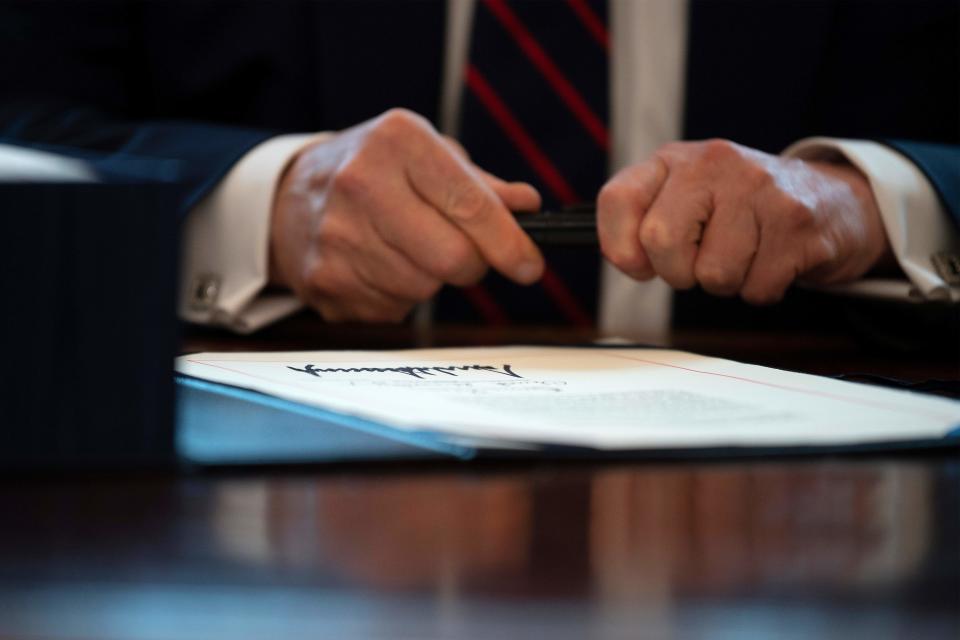How the coronavirus stimulus package makes it easier to tap your retirement savings
The $2 trillion stimulus package comes with a host of temporary provisions for retirement accounts that provide relief for retirees and non-retirees alike.
The spending package relaxes required minimum distributions, allows for larger 401(k) loans, and — most notably — loosens restrictions and penalties on early withdrawals from retirement funds.
Still, it’s important to take only what you need from the retirement funds — even in this uncertain time, experts said.

Easier to withdraw
You can withdraw up to $100,000 from your 401(k) or IRA early without incurring the 10% additional penalty as long as the hardship is a result of the coronavirus. Normally, anyone who is younger than 59 ½ years would have to pay this penalty.
You also can avoid taxes on the withdrawal if the amount you took out is returned to the account within three years. If not, the taxes on the withdrawal can be spread over three years.
What is considered a “coronavirus-related distribution” is broad. You don’t need to be diagnosed with COVID-19 for the new rules to apply.

Anyone “who experiences adverse financial consequences as a result of being quarantined, being furloughed or laid off, or having work hours reduced” because of the disease qualify, along with those who can’t work because they must watch their children who can’t go to school because of the outbreak.
“It’s important that the bill provides opportunities for financial hardships but we discourage anyone from dipping into their [401(k)] unless it’s absolutely necessary,” said Edward Gottfried, retirement expert at Betterment for Business. “Even workers who think they’re young will be affected if they dip.”
Borrowing from retirement
You can now delay any repayment obligations for 401(k) loans in 2020, according to the aid package. Typically, you’re supposed to pay back equal installments over the next five years, with interest.
You can now borrow up to $100,000 or 100% of your retirement account in the form of a loan — whichever is smaller — if you’ve been affected by COVID-19 economic hardships. Previously, the limit was $50,000 or half your savings — whichever was less — in a single year.
It’s important to note there are trade-offs when doing so.
“Money removed from retirement accounts [and] returned in the form of a loan with interest is not likely to net out what it would have made in a compounded form if it were left in your account,” Gottfired said.

Required minimum distributions
The new bill also allows retirees to hold off on taking required minimum distributions, or RMDs, from their 401(k) accounts and IRAs for up to a year.
RMDS are amounts you must withdraw from your retirement account on an annual basis once you turn 72. These distributions are based on your life expectancy and previous end-of-year balance. For those who were born before July 1, 1949 the IRA and 401(k) required minimum distribution starts at 70.5 years.
For those retirees who witnessed dips in their retirement account with recent market plunges, this is an opportunity to keep funds intact in their account and see them grow when the stock market recovers.
“If you have 100% equities and 25% went down, you’re not going to take out a larger sum of money based on last year’s balance,” said Rhian Horgan, CEO of Kindur, an investment firm. “The government is realizing that retirees in particular would not want to take out money just to meet a federal requirement.”
Dhara Singh is a reporter at Cashay and Yahoo Money. Follow her on Twitter at @Dsinghx.
Read more:
This is why you can’t get that historically low mortgage rate
Mortgage refinances hit 11-year high as coronavirus fears send rates tumbling
Read the latest financial and business news from Yahoo Finance and Yahoo Money
Follow Yahoo Finance on Twitter, Facebook, Instagram, Flipboard, SmartNews, LinkedIn, YouTube, and reddit.

 money
money 